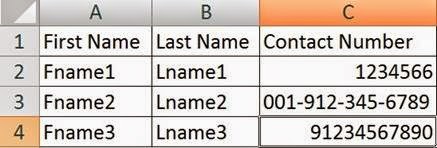3 Tips to Convert MBOX File to CSV Contacts for Windows
How to Convert MBOX File to CSV
Thunderbird is basically a free to use, open-source and cross-platform email client as well as news client that has been developed by Mozilla. Whereas the CSV file format is just a simple text file for a database table, it is supported by numerous applications including MS Outlook.This blog puts some light on the need and various techniques to convert MBOX File to CSV.
Need of Converting MBOX to CSV File Contacts
- Lack of Functionality: As we all know that Microsoft Outlook can run on Windows 7, 8 &10 whereas Mozilla Thunderbird application runs on several platforms. Moreover, MS Outlook has some of the features like full calendars and is fully integrated emails and contacts.
- Data Stored on Local System: Being a Thunderbird user, it is known to all that the data is saved on the local machine and not on the server. So, if a user wants the compatible application with the organization working environment, then Microsoft Outlook may be the best choice rather than Mozilla Thunderbird.
- The absence of Personal Storage Management: Outlook is the best way to manage the personal information of the users whereas it is not possible using Thunderbird application. Outlook uses CSV file to store different database table.
Manual Approach to Convert MBOX File to CSV
First Approach to Migrate Thunderbird Mbox to CSV File Format
For exporting the contacts from Mozilla Thunderbird to CSV, one can follow the steps that are given underneath.- Firstly, open Mozilla Thunderbird → Address Book from Menu Bar.
- Now, navigate Tools → Export.
- Now, users are required to specify the location where they want to store the resultant file. Now choose the selected address book as CSV format.
Second Technique to Convert MBOX File to CSV
- First and foremost, you need to select the address book which is needed to be exported
- After this, click Tools → Export
- While selecting Export, ensure that address book is still selected.
- You would need to save that file at some convenient location as LDIF file with any filename that you want to give it.
- Now transfer this particular LDIF file on the system to which you need to import this.
- If the user is trying to transfer the address book to some other PC machine, then he/she has to move the address book to this new machine and then retrieve this LDIF file.
- The first step needs to be repeated for getting back to the Address book.
- Now again, select Tools → Import → Address Books → Click Next.
- And now, select Text file (LDFI, .csv, .tab, .txt) .
- If it is CSV → click Next.
- Now, select the LDIF file’s location.
- Click on Finish and you are done with the process.


Comments
Post a Comment